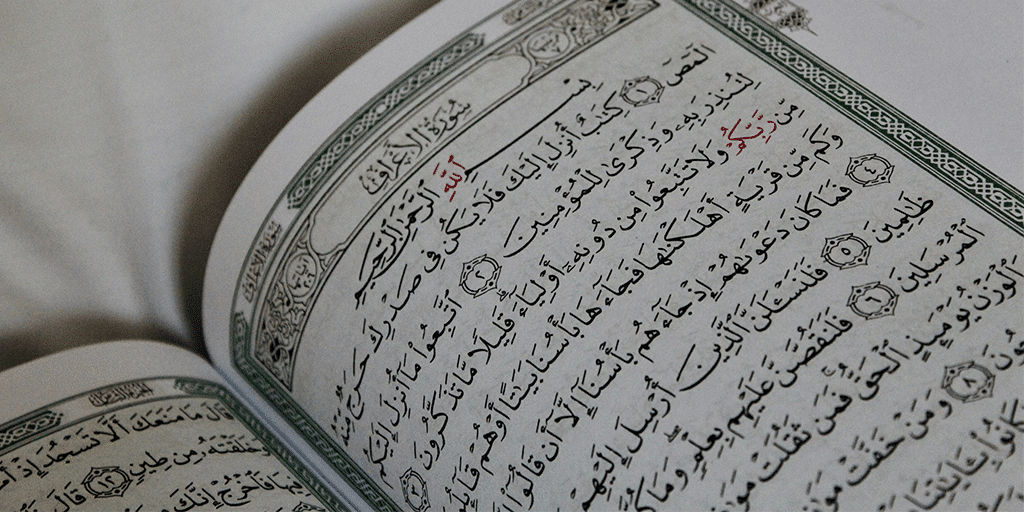The Gospel of Luke: Encountering Jesus This Easter

One of the things I love about the Gospel of Luke is how he presents Jesus in such a personal way. He includes a number of details and stories not found in the other Gospels that give us a glimpse of how Jesus personally sought after those around Him.
As the only one to recount Jesus’ parables of the lost sheep, the lost coin, and the lost (prodigal) son, Luke’s Gospel is filled with Jesus pausing from the crowds to go after the one. Along this vein, Luke uniquely includes Jesus’ statement on how He “came to seek and to save the lost” (Luke 19:10)[1] and displays with added detail how Jesus embodied it.
Luke shows us that Jesus’ personal pursuit of sinners continued even while He was dying on the cross and abandoned by His followers. As we consider these personal encounters, we see how Jesus graciously meets us in our sin, attends to our doubts, and turns our despair into joy.
Jesus graciously meets us in our sin.
Jesus sees us
Although each of the Gospels record Peter’s threefold denial of Jesus, Luke uniquely recounts how Jesus locked eyes with Peter immediately after Peter disowned Him for the third time. In this little detail, Luke helps us feel the relational weight involved in the event, and ultimately of sin in general.
“The Lord turned and looked straight at Peter. Then Peter remembered the word the Lord had spoken to him: ‘Before the rooster crows today, you will disown me three times.’ And he went outside and wept bitterly” (Luke 22:61-62).
Although we so often want to hide our sin and pretend it never happened, Jesus will have none of this. He sees through whatever facade we seek to erect and brings light to even the darkest recesses of our souls. While our sin grieves Him, it does not surprise Him. It does not repel Him. Rather, it is what initiated His journey to the cross in the first place. Within His piercing eyes is redeeming love.
Jesus forgives us
Luke is the only Gospel that includes Jesus’ words of forgiveness over the soldiers who just nailed Him to the cross:
“Jesus said, “Father, forgive them, for they do not know what they are doing” (Luke 23:34).
Even after receiving one of the most gruesome acts of torture, Jesus addresses His perpetrators with love and forgiveness. It was during humanity’s greatest display of hatred toward God that God showed us His greatest display of love.
Jesus promises us a future in the Gospel of Luke
While several of the Gospels mention the two thieves who were crucified next to Jesus, only Luke tells us about Jesus’ interaction with them:
“One of the criminals who hung there hurled insults at him: ‘Aren’t you the Messiah? Save yourself and us!’ But the other criminal rebuked him. ‘Don’t you fear God,’ he said, ‘since you are under the same sentence? We are punished justly, for we are getting what our deeds deserve. But this man has done nothing wrong.’ Then he said, ‘Jesus, remember me when you come into your kingdom.’ Jesus answered him, ‘Truly I tell you, today you will be with me in paradise’” (Luke 23:39-43).
Although that thief next to Jesus continued to experience excruciating pain, he spent his final hours with a peace he never knew before. Even though he had done nothing to deserve such a promise, he would soon receive everything because of it.
Jesus attends to our doubts
Luke’s depiction of how difficult it was for Jesus’ followers to grasp His death and resurrection is almost comical. Luke develops this theme by providing a number of unique details, but most notable is his extended account of those who encountered Jesus on the road to Emmaus. Even though they had given up on Jesus, He did not give up on them. He met them in their doubt and brought clarity to their confusion.
“Now that same day two of them were going to a village called Emmaus, about seven miles from Jerusalem. They were talking with each other about everything that had happened. As they talked and discussed these things with each other, Jesus himself came up and walked along with them; but they were kept from recognizing him.
“He asked them, ‘What are you discussing together as you walk along?’
“They stood still, their faces downcast. One of them, named Cleopas, asked him, ‘Are you the only one visiting Jerusalem who does not know the things that have happened there in these days?’
“‘What things?’ he asked.
“‘About Jesus of Nazareth,’ they replied. ‘He was a prophet, powerful in word and deed before God and all the people. The chief priests and our rulers handed him over to be sentenced to death, and they crucified him; but we had hoped that he was the one who was going to redeem Israel. And what is more, it is the third day since all this took place. In addition, some of our women amazed us. They went to the tomb early this morning but didn’t find his body. They came and told us that they had seen a vision of angels, who said he was alive. Then some of our companions went to the tomb and found it just as the women had said, but they did not see Jesus.’
“He said to them, ‘How foolish you are, and how slow to believe all that the prophets have spoken! Did not the Messiah have to suffer these things and then enter his glory?’ And beginning with Moses and all the Prophets, he explained to them what was said in all the Scriptures concerning himself.
“As they approached the village to which they were going, Jesus continued on as if he were going farther. But they urged him strongly, ‘Stay with us, for it is nearly evening; the day is almost over.’ So he went in to stay with them.
“When he was at the table with them, he took bread, gave thanks, broke it and began to give it to them. Then their eyes were opened and they recognized him, and he disappeared from their sight. They asked each other, ‘Were not our hearts burning within us while he talked with us on the road and opened the Scriptures to us?’
“They got up and returned at once to Jerusalem. There they found the Eleven and those with them, assembled together and saying, ‘It is true! The Lord has risen and has appeared to Simon.’ Then the two told what had happened on the way, and how Jesus was recognized by them when he broke the bread” (Luke 24:13-35).
Jesus journeyed with these discouraged followers in the messiness of their doubt. He opened the Scriptures to explain how everything that had happened was according to God’s long-foretold plan.[2] In doing so, He opened their eyes to see who He really was: their risen Savior.
Jesus didn’t tell His disciples to stifle their concerns, but rather invited them to examine the evidence for themselves.
Jesus fills us with joy and amazement
With joy and amazement overtaking despair, Luke’s Gospel culminates with Jesus ascending into heaven. His disciples worship Him and then continue to praise God in the temple.[3]
“When [Jesus] had led them out to the vicinity of Bethany, he lifted up his hands and blessed them. While he was blessing them, he left them and was taken up into heaven. Then they worshiped him and returned to Jerusalem with great joy. And they stayed continually at the temple, praising God” (Luke 24:50-53).[4]
Joy is a key theme throughout Luke’s Gospel, and here again, we find Jesus’s followers bursting at the seams with joy and praise. This is what overtakes us when we encounter God and His salvation.
Like with the early disciples, may your Easter culminate in joy and praise. May you let yourself lock eyes with Jesus and hear afresh His words of forgiveness. May you bring your doubts and despair to Jesus and let Him speak to you through His Word. May you let Jesus’ work on the cross and His promise of spending eternity with Him sink deep into your heart. Jesus has paid for our sin and conquered the grave. Our Redeemer lives!
Go Deeper
- The Evidence from Astronomy that Points to an All Powerful Creator 2 DVD’s and book – Package Offer
- Where is God When Life Hurts? – Package Offer
- Step by Step through Creation Package Offer
- All scripture quotations are taken from the NIV. ↑
- Luke also highlights this theme of Jesus opening the Scriptures in verses 6-8 when the women at the tomb remember His words and verses 44-49 when Jesus presents Himself to the disciples and opens their minds to understand the Scriptures. ↑
- Luke is the only biblical author to give an account of Jesus’ ascension. It is notable how differently the disciples handled Jesus’ departure at His ascension than that at His death. Although despair and disbelief characterized their reaction to Jesus’ death, joy and worship now overtake them at His ascension. In between the two lies their encounter with Jesus, physically raised from the dead. ↑
- Luke also emphasizes the disciple’s “joy and amazement” in verse 41 when they encounter Jesus alive from the dead, and process their doubts. Furthermore, Luke uses the same word for “amazement” in verse 12 as Peter processes the empty tomb. ↑









Thank you for your well written article. I have not read a lot of Luke, yet, in my journey, but your words have encouraged me to do so. I grew up going to church, but I thank God for giving me the time to realize God’s beautiful and joyous gift of salvation! Again, I thank you for your words about the words of Luke.
I was planning on reading Romans before sleep each night, but your illustrative writing about the gospel of Luke, I think maybe I’ll switch to reading to Luke first.
Excellent and inspiring insights! Thank you!!